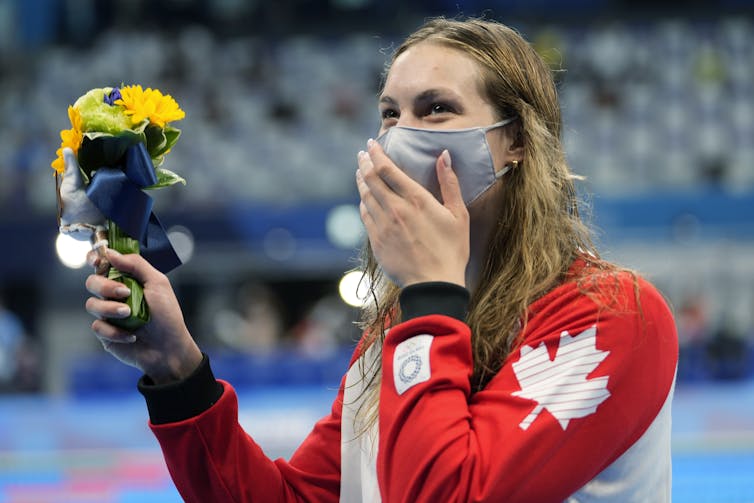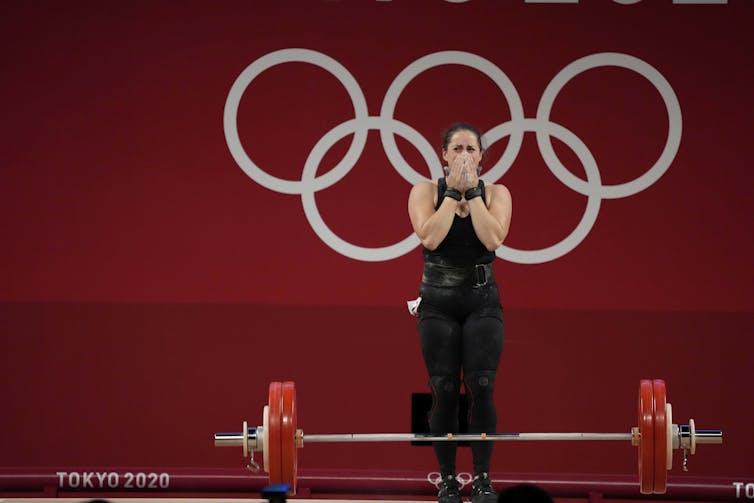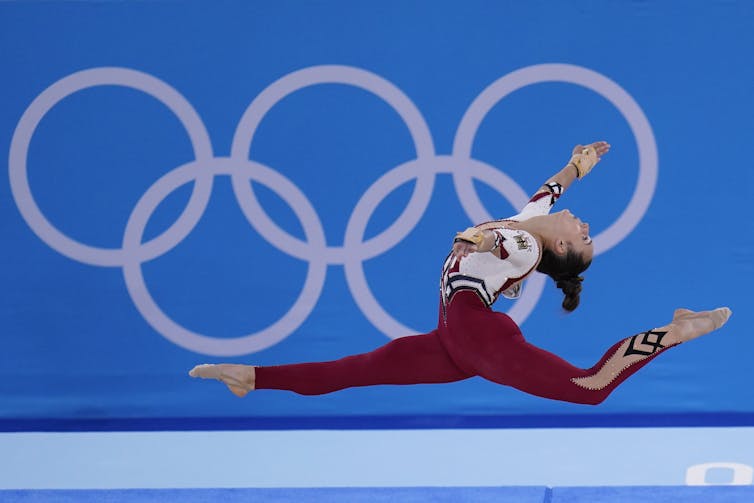Why women are owning the podium for Canada at the Tokyo Olympics
Why women are owning the podium for Canada at the Tokyo Olympics

Margaret Mac Neil. Kylie Masse. The women’s softball team. Maude Charron. The women’s 4x100-metre freestyle swimming team. Jennifer Abel and Mélissa Citrini-Beaulieu. Jessica Klimkait. Catherine Beauchemin-Pinard. Caileigh Filmer and Hillary Janssens. Penny Oleksiak. The women’s eight rowing crew.
Canadian women are owning the podium at the Tokyo Olympics. But why?
One week into the Tokyo Olympics, Canada has won 11 medals — all by women. Swimmer Penny Oleksiak became Canada’s most decorated Summer Olympian when she won a silver and bronze in the pool this week to go along with a gold, two silvers and a bronze from the 2016 Rio Games.
Part of the story of the success by the Canadian women could be gender parity — Tokyo 2020 has been lauded as the first gender-balanced Olympic Games in history. Yet Canadian women also outperformed our men at Rio 2016 where they returned with 16 of 22 medals. Things have been more balanced in other recent Summer and Winter Olympics.

Only three Canadians have won four Olympic golds — women again: hockey legends Caroline Oulette, Jayna Hefford and Hayley Wickenheiser. A total medal count puts Cindy Klassen, Clara Hughes and now Oleksiak at the top, with six each.
The emergence of Oleksiak, Wickenheiser, Klassen, Hughes and others, like soccer superstar Christine Sinclair, as household names speaks to the cultural impact of elite women’s sport in Canada. This is a good thing — for many reasons.
Why we need this boost
A 2020 Canadian Women in Sport report found that one in three girls will leave sport by age 16 compared to one in 10 boys. A 2021 followup report lays bare yet another devastating gut punch to women’s well-being: one in four girls are not committed to return to sport post-pandemic. That means an additional 350,000 girls sitting on the sidelines. Seeing Canadian female athletes shine at the Olympics provides a much-needed morale boost.
Media coverage in Canada is rightly celebrating this female athlete success. The absence of male medallists — so far — while not a desirable outcome in itself, gives both young girls and boys the chance to be inspired by female role models succeeding at the highest level of sport.

What’s more, changing male perceptions of traditional gender roles could save lives, according to a 2017 European study. Given a startling 2017 finding that unsupported female empowerment could actually increase rates of domestic violence, transforming boys and men into allies is vital. It may prove to play a key role in ending the so-called “shadow pandemic” of domestic violence that has raged throughout COVID-19 lockdowns.
Sport is good – really good – for health
Sport can provide mental and physical health benefits, social connection, confidence and leadership skills. It’s a big problem that only seven per cent of Canadian youth are meeting national physical activity guidelines for health. Olympic inspiration can change that.
I should know. As a sedentary teenager in New Brunswick, I turned on the small TV in the convenience store where I worked and watched the Olympics for the first time. I saw rowing legends Silken Laumann, Marnie McBean and Kathleen Heddle winning medals for Canada.
It was the first time I made the connection between the exceptional performances I saw on TV with the rowers I watched drift serenely by each morning on the vast expanse that is the Saint John River. I suddenly realized Canadians were really good at this. Soon after, I joined a learn-to-row program and my own Olympic journey began.
In other words — you have to see it to be it.
Why we must go further
Women are finding their voices, now more than ever. We see it in the realization of gender parity for the first time at an Olympic Games, in the German Olympic gymnastics and Norwegian national beach handball teams speaking out against hypersexualization by refusing to wear “regulation” uniforms in the face of financial sanctions, and in new mothers refusing to be separated from their nursing infants to attend the Olympics or standing up to skeptical sponsors who cut their funding.

These are all positive signs of a broader cultural shift in our collective perceptions of women in sport and society. Despite these major strides — equal representation, autonomy of clothing choice, freedom to have a family and compete — women remain underfunded and underrepresented in sport policy, sport science and sport medicine.
With so many women in the limelight like never before, it’s time for policy-makers, clinicians, sport scientists and researchers to step up and meet the challenge of not only keeping our Canadian women on the podium, but ensuring that all Canadian athletes are fairly reflected in sport policy, science and medicine.
The tension is building — and it’s good. Canadian women are defying the rules of age, motherhood and funding. Now it’s time we ensure women enjoy the same fundamental supports as men in every way.
Soak it in. Celebrate it. Promote it. Lifting up Canadian women’s success in sport bodes well not only for our future generations of athletes, but for our nation as a whole.![]()
Jane Thornton, Clinician Scientist, Canada Research Chair in Injury Prevention and Physical Activity for Health, Sport Medicine Physician, Schulich School of Medicine & Dentistry, Western University
This article is republished from The Conversation under a Creative Commons license. Read the original article.
Không có nhận xét nào: